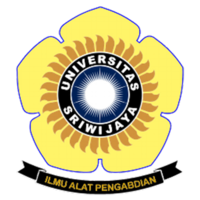Karakterisasi Biochar Terlapis Chitosan (Biosan) Sebagai Pembenah Tanah Tercemar Logam Berat
Abstract
Hamzah, A., & Priyadarshini, R. (2023). Characterization of chitosan-coated biochar (Biosan) as soil amendment polluted with heavy metals. In: Herlinda S et al. (Eds.), Prosiding Seminar Nasional Lahan Suboptimal ke-11 Tahun 2023, Palembang 21 Oktober 2023. (pp. 118-128). Palembang: Penerbit & Percetakan Universitas Sriwijaya (UNSRI).
Presently, the global concern for soil health stems from its direct impact on food safety. The extensive application of agrochemicals contributes significantly to the issue of soil pollution. Commonly identified pollutants in agricultural areas encompass heavy metals such as Pb, Cd, Cu, Zn, and various others. These toxic metals become entrenched in contaminated land and subsequently infiltrate plants, eventually accumulating in different plant tissues. This progression leads to the production of food that lacks the essential qualities for consumption. While soil enhancement agents like biochar and Chitosan are widely acknowledged for their potential in bolstering soil health, their usage remains limited and often isolated. Granule coating technology offers a viable solution to address soil-related predicaments. The amalgamation of biochar and Chitosan into granular structures, termed Chitosan-coated biochar technology, represents an innovative approach to soil amendment, operating in a multifaceted manner. This research was formulated sustainable soil amendment materials using the fabrication of biosan using granulation technology, followed by an extensive assessment of soil attributes and subsequent analyses. The amassed data were subjected to Anova at significance levels of 5% and 1%, followed by the BNT test in cases of significant variation. Specific parameters underwent descriptive analysis, which, which results showed that 100-mesh biochar, coated with a 20 grams/liter dose of chitosan, yielded a notably robust durability value of 81.83%. These results were not signficantly differ from the utilization of 60-mesh biochar alongside a chitosan dosage of 15 grams/liter. The 100-mesh biochar treatment exhibited the longest dispersion time at 182.50 minutes, while chitosan treatment records a dispersion time of 104.15 minutes. This formulation demonstrated efficacy in diminishing the concentrations of heavy metals, specifically Cu by 37.78% and Pb by 39.65%.
Keywords
Full Text:
PDFArticle Metrics
Abstract view : 461 timesPDF - 644 times
Refbacks
- There are currently no refbacks.

